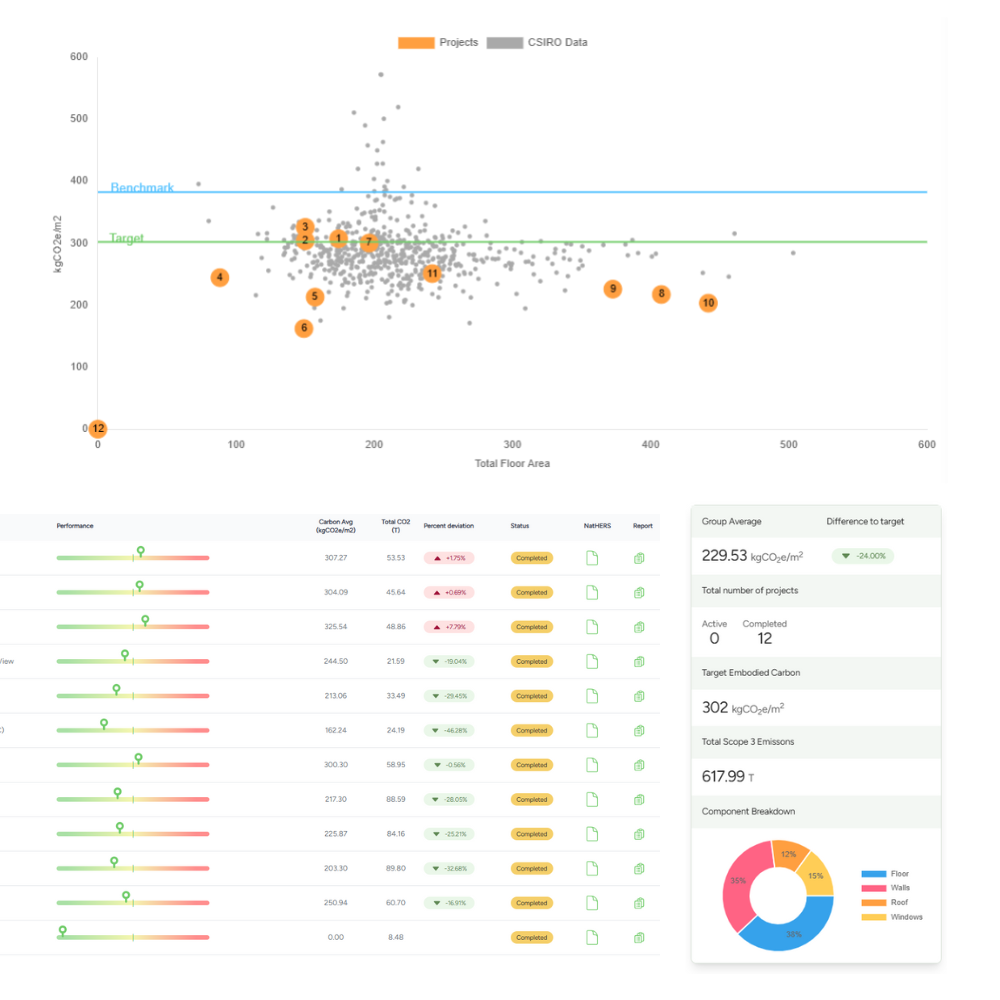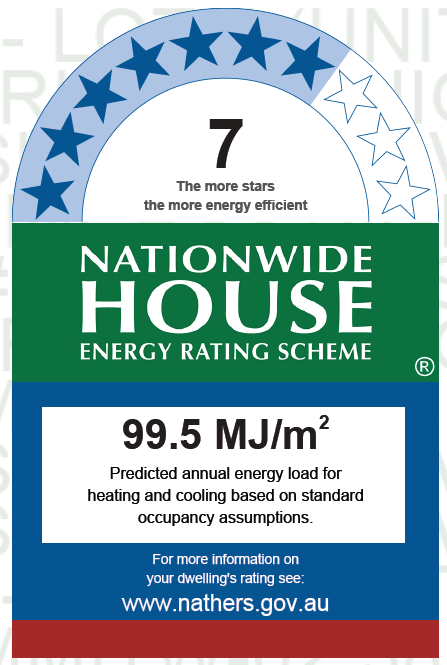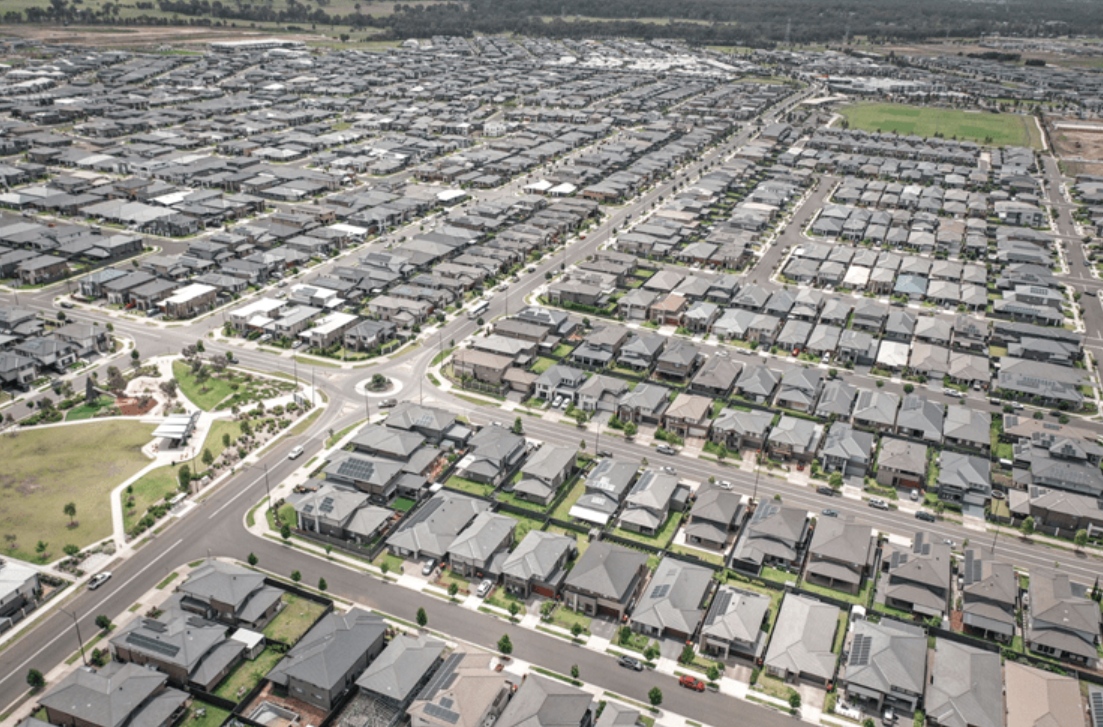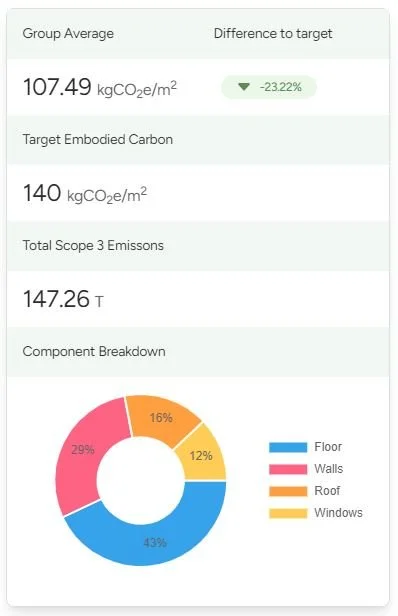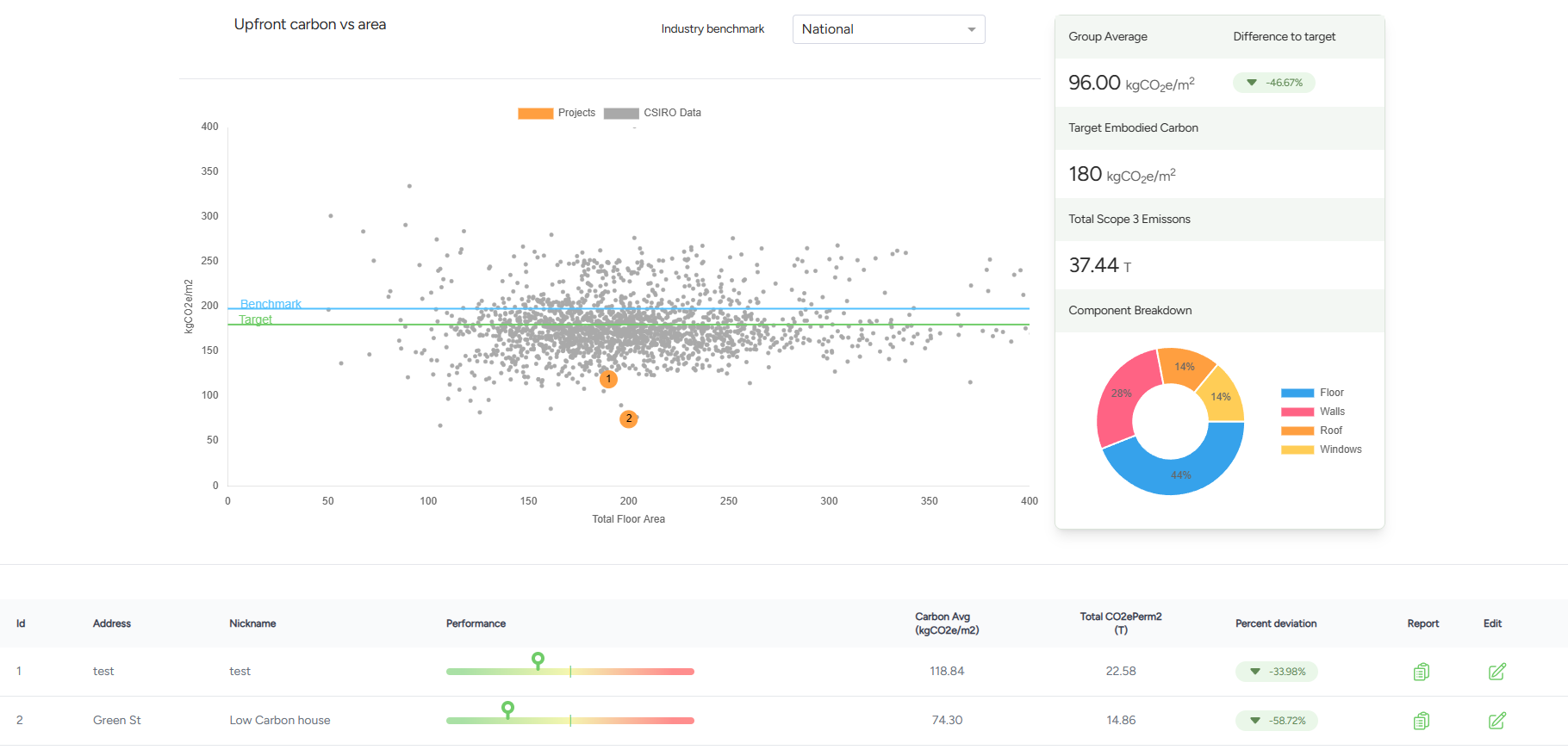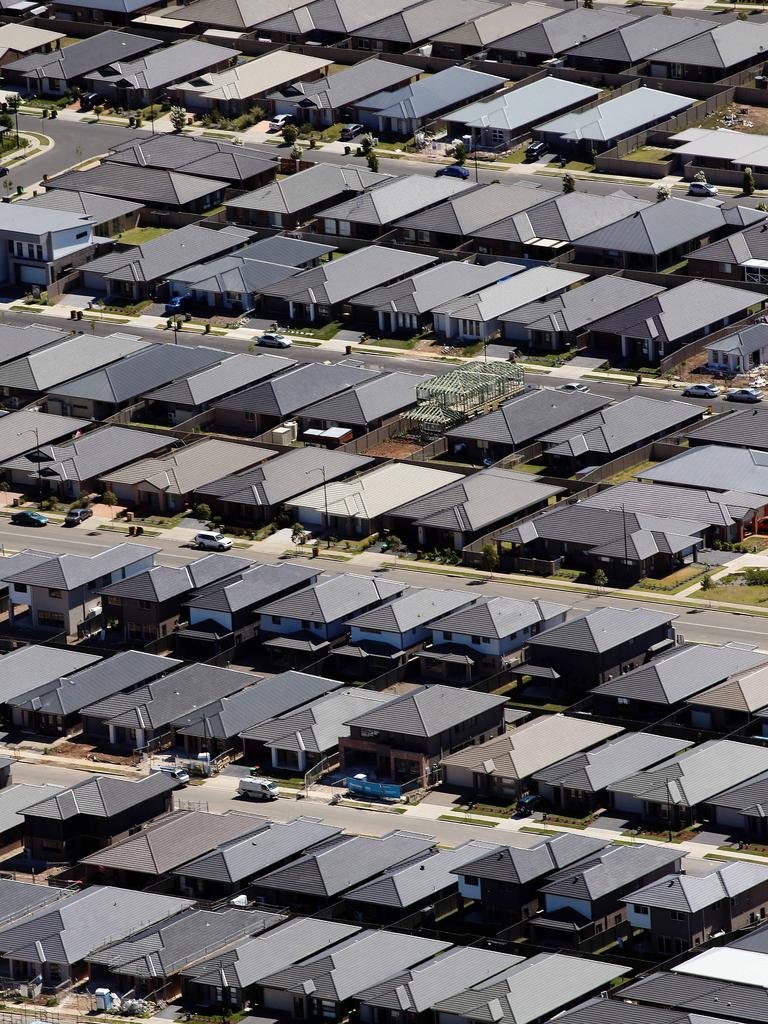We measure residential upfront carbon.
So portfolio organisations can measure their emissions.
Quickly and painlessly.
Mandatory ESG reporting is coming.
Good business depends on good data.
CarbonTrace is a digital platform, designed specifically for residential portfolio builders.
We instantly convert a ‘NatHERS’ energy certificate into an upfront carbon analysis, using powerful AI and proprietory algorithms.
No Bill of Quantities needed. No manual entry or take-offs.
Frictionless data gathering
Nationally consistent carbon measurement
Optimise performance before construction
Toggle between different emissions factor databases
Australian Residential Benchmark
Through a license agreement with CSIRO, CarbonTrace has converted over 1 million NatHERS certificates.
Compare the performance of a single home against a benchmark made up of 1 million homes.
Companies can use CarbonTrace to seamlessly convert their portfolio into comparable carbon data.
Develop company emissions ‘starting point’
Benchmark
Output audit ready reporting
Report
Discover reductions and set targets
Reduce
Company software to revolutionalise carbon reporting.
Seamlessly measure, track and compare the embodied carbon of houses against industry benchmarks and company targets.
This is built for scope 3 reporting requirements.
Why CarbonTrace?
Carbon reporting is difficult for residential houses at scale.
Carbontrace is for progressive companies that are looking to meet future ESG commitments.
We saw a need for an easy-to-use tool which can be used by ‘non-sustainability experts’ to inform early design decisions and discover pragmatic carbon reduction pathways.
How are we different?
Quick and easy
Consistent method of measurement
Australia's largest dataset of over 1 million houses
Developed by a Builder and an Engineer, CarbonTrace tackles upfront carbon from the coal-face, not the office chair.

